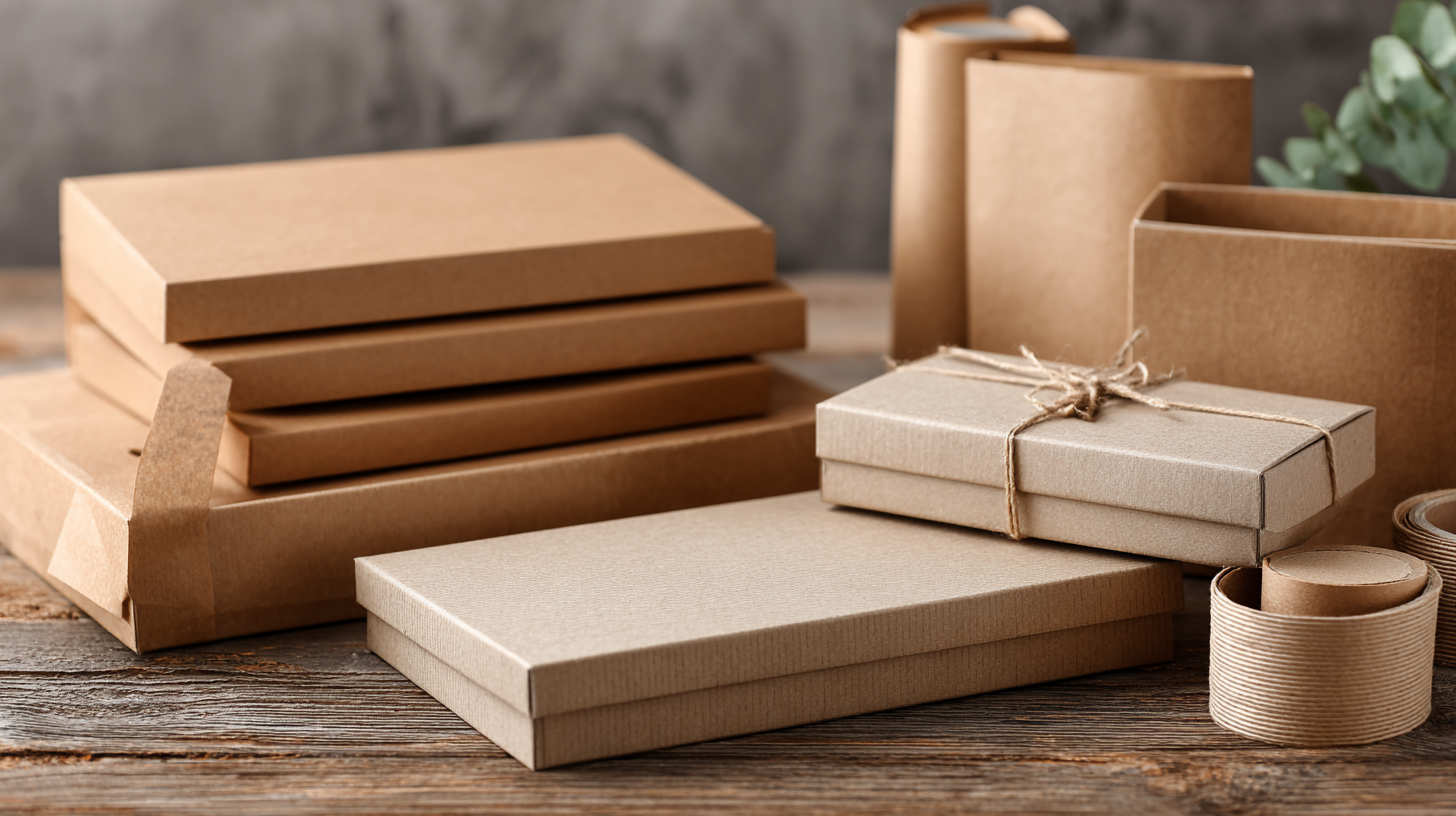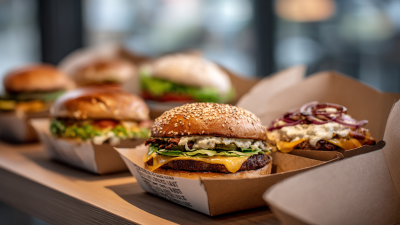The Ultimate Guide to Choosing Eco Friendly Packaging Supplies for Your Business
In recent years, the demand for eco-friendly packaging supplies has surged as consumers increasingly prioritize sustainability in their purchasing decisions. A report by Smithers Pira indicates that the global market for sustainable packaging is projected to reach $500 billion by 2027, driven by a shift towards greener practices among businesses and consumers alike. Additionally, a survey from Nielsen highlights that 81% of global respondents feel strongly that companies should help improve the environment, further emphasizing the importance of adopting eco-conscious packaging solutions. As businesses strive to meet these evolving consumer expectations and regulatory pressures, understanding how to choose the right eco-friendly packaging supplies becomes essential. This guide aims to equip businesses with the knowledge to make informed decisions that align with both their operational goals and the growing demand for sustainable practices.

Understanding the Importance of Eco-Friendly Packaging for Your Brand
In today's environmentally conscious market, the importance of eco-friendly packaging cannot be overstated. Brands that prioritize sustainable practices not only contribute to the health of the planet but also appeal to a growing demographic of eco-aware consumers. By integrating eco-friendly packaging into their operations, businesses can enhance their brand image, foster customer loyalty, and differentiate themselves from competitors. This commitment to sustainability reflects a modern ethos that resonates with a clientele increasingly concerned about environmental impact.

Moreover, eco-friendly packaging can play a significant role in communicating a brand's values and mission. When businesses choose materials that are biodegradable, recyclable, or sourced from renewable resources, they send a powerful message about their dedication to responsible consumption. This transparency can enhance brand credibility and trust, as consumers often prefer to support companies that align with their values. In an age where consumers are more informed than ever, eco-friendly packaging emerges not just as a trend but as a vital component of a brand’s identity and overall strategy.
Top Materials to Consider for Sustainable Packaging Solutions
When selecting eco-friendly packaging materials for your business, consideration of various sustainable options is crucial. Key materials such as paper and paperboard are often favored for their biodegradability and recyclability. These materials not only reduce environmental impact but also appeal to the growing consumer demand for sustainable products. In addition, innovations in mono-material packaging, particularly those utilizing polyethylene, showcase a shift toward more efficient, recyclable solutions that align with eco-conscious business practices.
Metal, glass, and wood are also noteworthy options for sustainable packaging. Metal containers can be easily recycled and have a long lifespan, making them an excellent choice for brands focused on circular economy principles. Glass, although heavier, is recyclable and can maintain product freshness, which is ideal for food and beverage industries. Wood packaging, derived from renewable resources, provides durability and an organic aesthetic that resonates with environmentally aware consumers. As the market grows, leading companies are increasingly developing innovative approaches to leverage these materials, ensuring that businesses not only meet regulatory requirements but also contribute positively to environmental sustainability.
The Ultimate Guide to Choosing Eco Friendly Packaging Supplies for Your Business
How to Evaluate the Environmental Impact of Packaging Supplies
Evaluating the environmental impact of packaging supplies is crucial for businesses aiming to choose eco-friendly options. The lifecycle assessment (LCA) of packaging materials helps determine their overall environmental footprint, from raw material extraction to production, usage, and eventual disposal. Businesses should prioritize materials that are recyclable, compostable, or made from renewable resources, as this not only mitigates waste but also aligns with growing consumer demand for sustainability.

As the global market for LCA software is projected to grow significantly, reaching an estimated $695.3 million by 2032, businesses can leverage these tools to assess their packaging options more effectively. This growth reflects the increasing importance of environmental considerations in business strategies, prompting manufacturers to adopt innovative, sustainable practices. Companies can utilize these assessments to make informed decisions, ensuring that their packaging supports their sustainability goals while meeting regulatory standards and consumer expectations.
Creative Tips for Designing Attractive Eco-Friendly Packaging
When designing attractive eco-friendly packaging, it’s essential to marry aesthetics with sustainability. According to a report by Nielsen, 81% of global consumers feel strongly that companies should help improve the environment. This sentiment drives businesses to innovate not only in terms of materials but also in the design of their packaging. Utilizing recycled, biodegradable, or compostable materials can significantly enhance the visual appeal while resonating with environmentally-conscious consumers. For instance, using plant-based inks and minimalistic designs can reduce environmental impact and create sleek packaging that stands out on the shelf.
Moreover, incorporating interactive elements into the packaging can elevate the unboxing experience. Research from the Packaging Association indicates that attractive packaging can lead to a 30% increase in sales. Elements such as unique shapes, textures, and easy-to-open features engage consumers and encourage them to share their experiences on social media, further enhancing brand visibility. Moreover, integrating clear messaging about the sustainability of the packaging within the design can help convey a brand's commitment to eco-friendliness, fostering customer loyalty and trust. By creatively combining functionality with eco-awareness, businesses can not only attract more customers but also contribute positively to the environment.
Strategies for Sourcing Eco-Conscious Suppliers for Your Business
In the quest for eco-conscious suppliers, businesses must adapt their sourcing strategies to align with sustainability goals. According to recent industry reports, more than 60% of consumers are willing to pay more for sustainable products, indicating a significant market shift toward eco-friendly offerings. Companies can tap into this trend by leveraging technology to optimize resource use and track emissions throughout their supply chains. Advanced technologies, such as inventory management systems and data analytics, enable businesses to identify suppliers who prioritize environmental stewardship and sustainable practices.
Furthermore, sourcing decisions should consider the environmental impact of packaging materials. Sustainable packaging solutions encompass materials that minimize waste and reduce carbon footprints. Industry research indicates that switching to eco-friendly packaging can reduce overall packaging waste by 30-50%, thereby enhancing a brand's green profile while meeting consumer demand for accountability. By collaborating with suppliers committed to sustainable practices, companies can navigate the complexities of the supply chain, ensuring their packaging not only meets regulatory standards but also resonates with environmentally conscious consumers.
Related Posts
-

Creative Burger Packaging Ideas for Sustainable Fast Food Solutions
-

Revolutionizing Sustainable Food Packaging Solutions for a Greener Future
-

The Future of Sustainability in Carton Packaging Techniques and Innovations
-

Exploring Eco Friendly Innovations in Carton Packaging for Sustainable Brands
-

Innovative Trends in Food Packaging Design You Need to Know for Sustainable Choices
